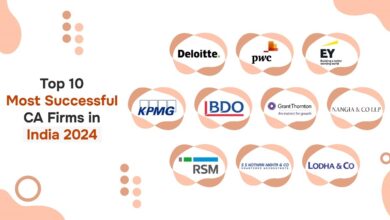The International Monetary Fund and the World Bank roll out debt relief plans to push green investments in low-income countries

The COVID-19 pandemic that dawned upon us some time around this period last year taught us a lot of things, primarily the acknowledgement of our privileges over others. The world is facing a crisis and needless to say, the crisis is much more severe for those who do not have the resources and privileges to fight back. While small businesses and self-employed individuals in India are struggling to make ends meet and make their debt repayments, banks in the country also, have rendered themselves helpless for they are also in no condition to offer another loan moratorium. Now imagine this exact situation but now with low-income individuals, but low-income countries, those that are facing two crises at the same time- the pandemic and the crushing pressure to pay down their debt. The International Monetary Fund (IMF) and the world bank, however, have proposed methods to be the saviour in this time of need for the low-income countries by devising their very creative “green-debt swap”. While India does not fall in the category of low-income countries, a lot of its neighbours would be taking a sigh of relief because the plan not only helps them release the debt pressure but also saves them from the very real crisis that has approached the world- the environmental problems.
The idea to forgive debt in exchange for green
investments gained momentum around the spring meetings of IMF and The World Bank and even though things are not finalised as yet, they’re expected to take their concrete proposal course by the time of global climate summit this coming fall. The pandemic, in addition with the debt repayment pressure and the thriving environmental crisis, has worked to make the low income countries highly, highly vulnerable and it surely makes sense for the world to undertake these “green debt swaps”. “The Covid-19 crisis has made it significantly harder for developing countries to tackle the rising risks posed by climate change” and environmental disasters, said a World Bank spokesperson while taking about the proposal. Not only that, these low income countries also witnessed the wrath of economic crisis followed by the pandemic that made their already tight budgets go completely out of hand, or say, pockets. “By enlarging the debt burdens of governments – which were already at record levels on the eve of the crisis – it has left them with fewer resources to invest in a recovery that will also put the planet on a more sustainable footing,” the spokesperson said.
Undoubtedly, the situation is creative in its essence and very helpful in both the short and long run of these low income countries, which, unsurprisingly was the objective of these international institutions. While the world is being a witness to a number of crises all at once, it is these proactive and creative approach to the problems that is needed to help address the key issues of our time. Integration of two major problems is just cherry on the top of this healthy-for-all cake. “We are going to work with the World Bank. And by COP 26 we will advance that option” of a debt swap, Georgieva said, adding that it will then be up to creditors and debtors to decide whether to take part. For Thierry Deau, the founder and CEO of the Paris-based Meridiam group, which specializes in developing and financing infrastructure projects, if the green debt-swap option is pursued, it will have to be linked to clear conditionalities to ensure that debt relief in fact leads to the launching of green projects. “The primary responsibility there on this debt relief is between the countries that are on both sides,” he said. “There’s a lot of politeness about this topic, and I think we have to stop that and create real true partnerships.” We understand how different ideation and implementation actually is and it is this fact that needs actual focus to ensure that the said purpose of aiding two problems at once hits its bull’s eye.
However, it would not be sufficient to aid the low income countries that are both economically and environmentally challenged but also those middle income island countries that even though are performing decently on the economic front, are facing daunting environmental challenges. Again, these middle income island countries referred to here are those that made their economy thriving through their extensive travel and tourism revenue. As can be expected, the pandemic severely curtailed these economies, which makes it more and more imperative that the International Monetary Fund and The World Bank lend a helping hand to these distressed island countries as well.
We’re aware that while not all expectations can be put on these international organisations, we’re sure in believing that this chain of help would go a long way for those who actually take benefit of it. This statement roots from the fact that the countries that have successfully launched green projects in an attempt to fight the environmental battle have witnessed a discernible shoot in the employment prospects. There are opportunities for job creation,” said Kristalina Georgieva, the managing director of the International Monetary Fund. “Just take, for example, renewable energy – seven jobs to one in the traditional coal energy sector,” even if some training is required. “Similarly, reforestation, taking care of land degradation, resilience to climate shocks, these are all labour intensive activities,” Georgieva said. “Policymakers need to think about it now.”




